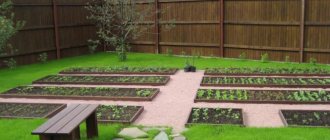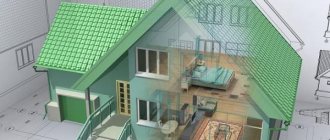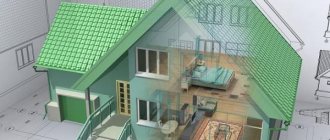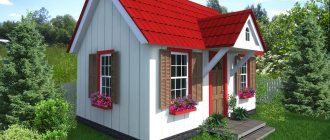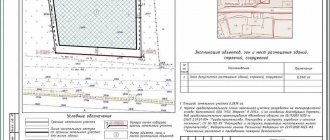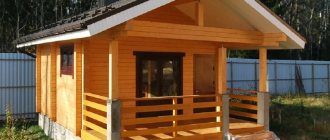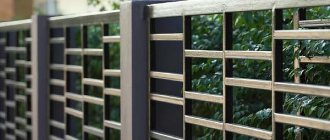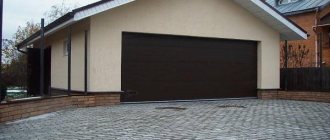On what lands is construction allowed?
All land resources within the country have different purposes and special legislative regulation. Land legislation provides for their division into several categories (Article 7 of the Land Code of the Russian Federation).
The articles of the Land Code provide a complete list and description of them:
- agricultural lands;
- lands of populated areas;
- lands of defense, industry and other special significance;
- lands of specially protected objects and territories;
- forest fund lands;
- water fund lands;
- reserve lands.
Each of these categories has a special status, rules and restrictions for use. You cannot change the purpose of land or types of permissible use at will. According to current laws, it is determined that development is allowed on the first two types of land. At the same time, the status of buildings permitted for construction on them varies.
How to get a mortgage to build a house - an expert's guide
To get money, you need to follow the general algorithm of actions:
- Select a plot of land. Make sure that its intended purpose meets the main goal - the construction of a private house (plot for individual housing construction). It is important that communication systems pass nearby, and that the site is free from restrictions and easements.
- Agree on the project and notify the administration. Collect permits and begin choosing a bank.
- Check with the bank for the required package of documents. Usually this is an application form (filled out at the office of a financial organization or on the website), a passport, a certificate of income, permits and an extract from the Unified State Register of Real Estate. It is necessary to collect documents and submit them to the bank.
- Wait for a decision. It is taken from one to seven days.
- Sign the mortgage agreement.
If one of the bank's requirements is the existence of a contract agreement between the borrower and the developer, the funds will be transferred to the developer's account. In other cases, the funds are transferred to the borrower - to a special account or through a safe deposit box.
What and where can be built
Residential buildings with the ability to register in them without any problems are located only on
areas of settlement land. They are allowed to be used for individual construction (individual housing construction) and personal subsidiary plots (LPH). With agricultural lands, things are more complicated. When the land for private household plots is located outside the settlement, it is considered a field settlement and construction cannot be built on it.
It is also not allowed to build a permanent house or other similar buildings on lands allocated for vegetable gardening. On the lands received for peasant farms (peasant farms), it is possible to erect various types of buildings, buildings and structures necessary for carrying out this activity. On a garden plot you can build houses without registering (see details below), as well as buildings of an economic (auxiliary) nature. It remains to find out what can be built on a summer cottage.
The legislator does not prohibit building a house on a summer cottage. It can be built as residential or without the ability to register your residence.
In addition, various auxiliary facilities for small farming are permitted for construction.
Liability for violation of construction rules
Construction on lands for gardening and SNT without approval is recognized as non-intended use of land. Punishment for such an act is provided for in Article 71 of the Code of Administrative Offenses of the Russian Federation. At the municipal level, a fine of up to 2,000 rubles on the owner of the site at any time during construction or after its completion.
If payment is late, a double fine may be imposed. If execution is refused, the fine is collected through the Bailiff Service forcibly.
Houses built without approval are given the status of unauthorized construction. If the owner does not legitimize the building in the prescribed manner, the court issues an order to demolish the structure within a specified period at the expense of the owner.
Gardening plots are allocated for the intended use of the land. They can be used to build garden houses, agricultural and utility buildings of a non-permanent type. A residential building can only be built on a site within a populated area after agreement with local authorities. Unauthorized construction is recognized as an administrative offense and is punishable by a fine.
If you need advice, our land lawyer will help you.
What is allowed to build in gardening (SNT, SNP, SPK)
The answer to the pressing question of whether it is possible to build a house on a garden plot has already been found. Now you need to find out what nuances need to be taken into account for this. Land for gardening is allocated to people for recreation and growing various agricultural plants.
The provisions of the law (“On gardening, vegetable gardening and dacha non-profit associations of citizens” dated April 15, 1998) allow the construction of a residential building on a garden plot.
This can be done with any form of the association itself (SNT, SNP or SPK). Both in horticultural non-profit partnerships (SNT), and in horticultural cooperatives (SPK) and partnerships (SNP), not only economic but also residential buildings can be carried out for gardening. According to the law, it is impossible to register (register residence) in such buildings. However, recently, thanks to the position of the Constitutional Court of the Russian Federation, this can be done through going to court. In gardening, a house can be considered a permanent place of residence with all the ensuing consequences.
You can register in a residential building
After the construction of a residential building and registration of its ownership, you can register in it. Art. 2 of the Law of the Russian Federation dated June 25, 1993 N 5242-1: “Registration of a citizen of the Russian Federation AT THE PLACE OF RESIDENCE - registration of a citizen of the Russian Federation at the place of residence... Place of residence - RESIDENTIAL HOUSE, apartment, room, living space...”. The main thing is that the house has the status of “residential” and not “garden/dacha”.
Other articles
How to register ownership of a summer cottage How to change the VRI: from individual housing construction to private household plots; from private household plots to private housing construction; From individual housing construction to “commercial real estate”; garden/dacha plot in individual housing construction.
If you have questions, you can consult for free. To do this, you can use the form below, the online consultant window and telephone numbers (24 hours a day, seven days a week): 8 Moscow and region; 8 St. Petersburg and region; all regions of the Russian Federation.
Standards for building houses
Construction of a house in a garden partnership, other association or in summer cottages must meet certain requirements. Firstly, you will have to take into account the rules adopted in this garden (dacha) association. Secondly, you need to comply with all fire safety standards and requirements.
Depending on the materials of buildings, the permissible distances between them may vary. For example, between stone and block houses they must be at least six meters. If both buildings are made of wood, then more than fifteen meters, for funny buildings - no less than ten. There are also requirements for the building density of plots - no more than thirty percent.
It is important to comply with the requirements for distances between the buildings themselves. It is determined based on the type of building, and ranges from eight to twelve meters. A distance of at least three meters must be maintained from houses to the boundaries of adjacent plots. Depending on the purpose of the house (country house or residential), different construction requirements and standards apply. Residential buildings must have communications and rooms of a certain size. The height of the ceilings also matters (for dachas - 2.2 m, for residential buildings -2.5 m).
Read more about this in another article.
Requirements for the location of the building
The location of the house on the site is of great importance. There is a fairly impressive list of rules on this matter. It is important to understand that these laws are designed for safety and must be followed.
Rules regarding the location of the building on the site:
- First of all, you need to consider the distance that must be maintained between residential buildings. There should be a distance of 6 meters between structures made of non-combustible materials. There is 8 meters between buildings, partially finished with wood. There is a distance of 10 meters between a wooden building and a building made of non-combustible materials. There are 15 meters between two wooden buildings.
- The house must be located at a distance of 3 meters from the border of the land plot. In this case, you need to retreat 15 meters from the forest.
- Livestock sheds must be built at a distance of four meters from the fence.
- The restroom should be located at a distance of 12 meters from neighboring residential buildings and at a distance of 8 meters from neighboring saunas and baths.
- The height of the basement should not exceed two meters.
- Outbuildings may be located a meter from the neighbor’s fence.
At the same time, buildings located on the same site can be built at any distance from each other. However, we must remember that their total area should not exceed 30% of the entire plot.
Do I need to obtain permits?
Typically, special permits are required for the construction of any permanent structures.
A big advantage of building on dacha and garden lands is that there is no need to obtain permission to build a house in SNT, a dacha plot. This makes life easier for home owners when putting buildings into operation and registering them in the real estate register. However, unfortunately, this procedure is only valid until March 1, 2021. Theoretically, after this date the so-called “dacha amnesty” will not apply. Although, it is possible that the law will once again be extended into 2022.
Until this time, a construction permit in SNT (SPK, SNP, at dachas) for putting construction projects into operation, their registration is not required.
Where you can't build a house
According to legal regulations, not all areas located in the field are suitable for construction.
It is prohibited to build houses on the coastline near rivers and lakes. In some cases, the exclusion zone can be 200 m. Any restriction of free access to the shore can be interpreted as a violation of the law and punishable by a fine and the demolition of the building itself.
Can and cannot be legitimized Source znamyuzl.ru
What are the consequences of failure to comply with prescribed standards?
On lands provided for citizens to carry out gardening, horticulture, and summer cottage farming, all requirements of forestry, land, town planning and other special laws must be observed. For their violation, a type of liability established by the legislator is provided. So, if fire safety rules are violated, the gardener will have to pay a fine (Article 20.4 of the Code of Administrative Offenses of the Russian Federation).
If a structure is erected on a site that is not suitable for such purposes in accordance with the law, or there are violations of mandatory construction standards and rules, then it is considered unauthorized.
The use of unauthorized buildings is not allowed; they can be demolished by court decision.
Finally. When constructing residential buildings, many nuances need to be taken into account. Before you start construction, find out what land you can build a house on. It is equally important to gain an understanding of the norms and rules of construction on country and garden plots. This will help avoid legal problems or resolve existing ones.
Preparation for construction
The first thing you need to do before starting construction is to check the availability of documents for the land area. It is permissible to begin the construction of a residential property only if the site is in the personal property of the initiator of the process.
If the land is not properly registered, then you will need to first go through the appropriate procedure with Rosreestr. It is possible that additional land surveying of the dacha plot will be required if the boundaries of the territory were not previously fixed.
If the documents are in order, you can submit a request to the administration to obtain permission to build a residential property. Now the procedure for documenting has changed somewhat . From March 1, 2021, this procedure is of a notification nature.
Documentation is submitted in person to the relevant administration department. Typically, the department or committee of urban planning and architecture is responsible for issuing permits. It is also possible to send a request by mail in the form of a registered letter or use the services of the MFC.
The decision is made within 7-10 days. After which the applicant is notified of approval or refusal by mail. If the answer is positive, construction will take 10 years.
If the decision is negative, you cannot build. In this case, it will be necessary to correct the shortcomings in the submitted house construction plan so that the parameters of the latter comply with the standards, and only after that submit the next notification to the authorities.
Contents of the request for permission to build a house
The notice prepared for the administration indicates:
- name of the authority where the request is submitted;
- information about the applicant - full name, passport details, contact information (phone number, email);
- information about the land area on which the house is supposed to be built - purpose of the site, cadastral number, type of use right (rent, ownership), availability of rights to the land from other persons;
- information on the object under construction (technical parameters) - type of building (residential), number of floors, footage, setbacks from the boundaries of the site, total height, availability of communications;
- a graphic image of the house (drawing), indicating exactly how the house will be placed on the plot of land;
- date of notification;
- compiler's signature.
Copies of title documents for the land are attached to the petition. This may be an extract from the Unified State Register or a corresponding certificate. It is also necessary to present the document on the basis of which the entire right of ownership arose. For example, a purchase and sale agreement, a deed of gift, a will.
It is important to remember that in the absence of registration documents for the site and without notifying the administration of the proposed construction, the erected house may be considered an illegal building. This is fraught not only with unnecessary expenses, but also with problems with the law. Therefore, before starting construction, it is so important to coordinate the process with local authorities.

